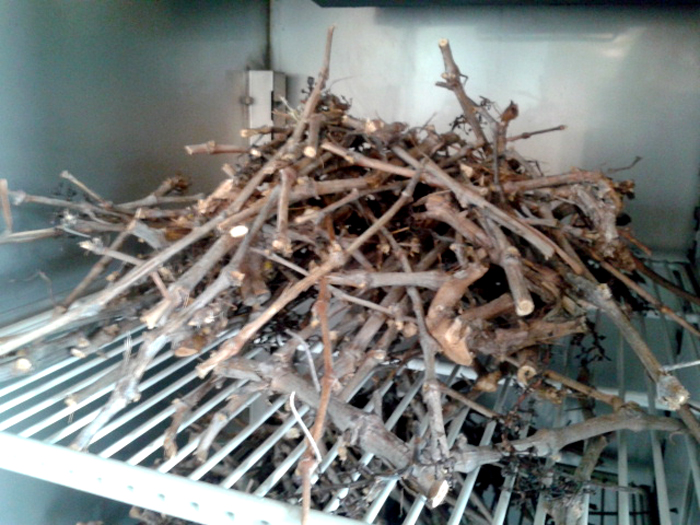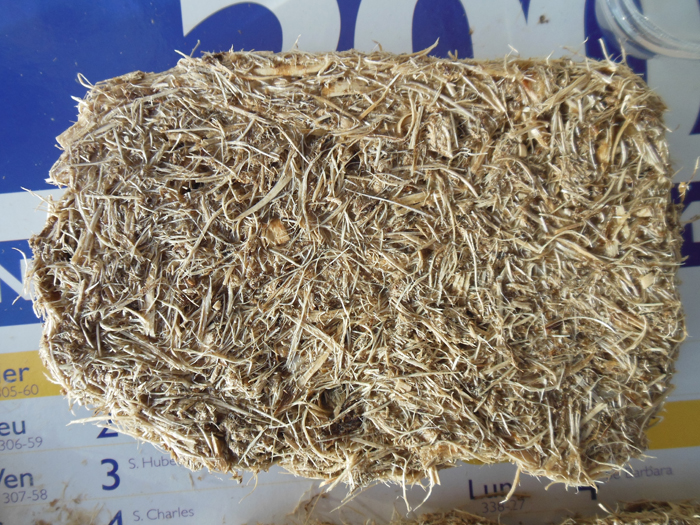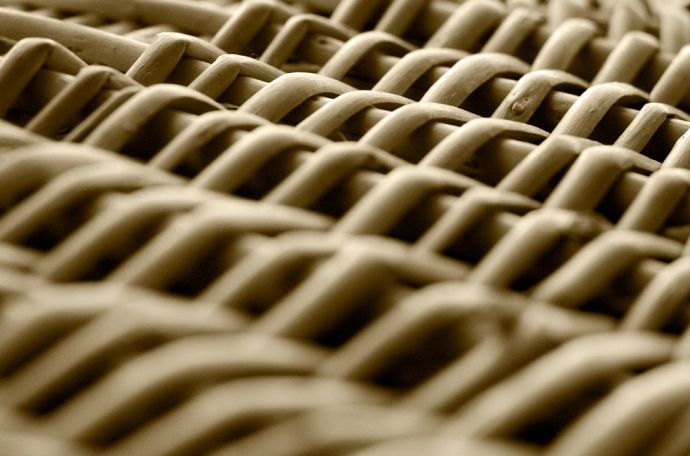Column of a material maker (13)
Published 18 April 2016 by Caroline Grellier
Termatière, future company specialized in the creation and collaborative development of recipes made from 100% bio-sourced material, begins its R&D (at last!). Time for our maker Caroline Grellier to get her hands dirty again with support from the laboratories of Inra.
First, very recent good news: Termatière has just joined the incubator of the Ecole des mines d’Alès (EMA)—a group of French engineering schools—to reinforce the technical support on material implementation. Also an opportunity for me to infiltrate the network of material engineers of the EMA Research center in materials, specialized in bio-sourced, in view of future hiring…?
Lab: almost imminent start!
The advantages of working with a lab partner such as the National institute for agronomical research (Inra) are numerous: a true endorsement in the eyes of representatives to convince, a guarantee of technical quality for the development of the project, a hands-on research team that has an interest in the project turning out well. The inconvenient? I am finding out at the moment: Inra is a large machine, with a whole chain of necessary approvals for any action to take place. I am therefore confronted with administrative problems that have nothing to do with me, the complexity of which I do not grasp but that has an undeniable consequence: delay! As a result: the formulation for the glue has not begun since the hiring of our young PhD student whose mission it is, is frozen for the moment. So I just have to grin and bear it.
While waiting for the glue, the vine shoots are ready to be grinded. But grinding at Inra isn’t the approximation I am used to with my cheese grater and my blender. I thought I would grind my 15 kg of vine shoots in half a day, by pushing them whole into the machine and leaving in the evening with my bags of grinded material. In fact, no.

I discovered the scientific approach to vegetable grinding. For the vine shoots to be grinded, you need to store them for two days in a drying oven in order to control their degree of humidity (between 10 and 13%) to examine precisely the grinding conditions. And I must admit that between the knife mill, the mortar grinder, the S2000 grinder thing, the vegetable grinder, the grinder from Castorama (DIY store) and all the different grating sizes, grinding in several steps and sieves, the varied methods to separate particles according to fractions, I could only hesitate on which one to use.
We therefore decided to move step by step so that I could get a hold on the visual aspect I was looking for. Once the vine shoots are steamed and analyzed, we will begin with obtaining rough shavings, the size of which will allow us to test different grinding fractions. By the time my little vine shoots dried up, the grinding session was programed for the following week. This is it, it begins at last!
Self-fund the end of my R&D: yes, but how?
The month of March went by very quickly in the calm of my office at the incubator of Montpellier Supagro. Having held a series of external meetings, it was time for me to sit down and review my action plan in the short and medium term and analyze the relevance of the current strategy. In short, make an assessment.
Termatière is in the middle of a technical feasibility study, with a first brick in collaboration with Inra, the objective of which is to formulate the exact recipe for the 100% bio-sourced vine shoot composite. The second brick is the characterization of samples, compulsory to be marketed. Developing a new material formulation is a costly project and a long research process. I wasn’t really prepared for that fact, lacking this industrial culture and being used to tinker in my improvised workshop with an immediate home-made result without the need for great means. I am therefore discovering what I cannot avoid if I want to result in a material recipe that can be industrialized to change the scale of production.

In order to finance this second brick, I worked over a fortnight on a funding request file with the public investment bank. But competition is tough and there is no guarantee I will obtain the requested budget. We therefore had to anticipate on plans B, C, Z, because with such a long value chain within Termatière, I would soon be dependent on funding at that rate, risking to reach the end of my technical study with difficulty within the time frame I wanted to keep.
So rather than spending time getting out of my way to obtain a maximum of subsidies, without having short-term visibility over the course of the project, I opted for a restructuring of my offers, in order to be able to sell services rapidly, allowing me to self-fund my last R&D expenditures. In order to do so, nothing like a meeting with Pierre-Christophe Adrian, consultant with the Schemas firm, who had already worked on Termatière at the very beginning of my incubation. A brainstorming Friday that paid off by offering a range of coherent consulting and support activities to companies looking for bio-sourced materials or looking to upcycle their green waste. New strings to add to the bow of Termatière that still require small adjustments.
Parisian tour
I took advantage of a small Parisian tour at the end of March to test these new offers and take into consideration the needs of my future clients.

First round at the round table “Bio-sourced materials: towards a zero impact architecture” organized by Karibati at the Chaillot palace, in which I spoke to present the very low-tech method of Termatière and the singularity of the DIY designer’s approach in the applied research in materials. For me it was also about revealing the esthetic potential of these materials, often relegated to the status of low profile structuring materials. An eventful afternoon therefore, with architects, students and professionals, talking about straw bales, rice bran, algae plastic, corn starch and vine shoots.

Second round on March 24 at the City Hall Hacking, where a schedule of 15 minute meetings with start-ups, large groups and investors was awaiting me. An opportunity to develop a good pitch throughout the day and exchange views with ardent supporters of agricultural waste upcycling in Africa.
The third round will take place on May 24-25 in Châlon-en-Champagne during the Sinal Exhibition, the international meeting place for the Bioeconomy. Until then, I have a lot on my plate and vine shoots in the drying oven.
